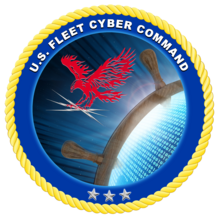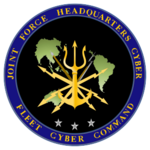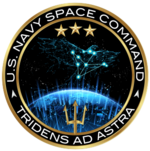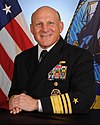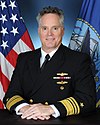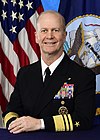
The Central Security Service (CSS) is a combat support agency of the United States Department of Defense which was established in 1972 to integrate the National Security Agency (NSA) and the Service Cryptologic Components (SCC) of the United States Armed Forces in the field of signals intelligence, cryptology, and information assurance at the tactical level. In 2002, the CSS had approximately 25,000 uniformed members. It is part of the United States Intelligence Community.

The United States Space Command is a unified combatant command of the United States Department of Defense, responsible for military operations in outer space, specifically all operations 100 kilometers and greater above mean sea level. U.S. Space Command is responsible for the operational employment of space forces that are provided by the uniformed services of the Department of Defense.

The United States Strategic Command (USSTRATCOM) is one of the eleven unified combatant commands in the United States Department of Defense. Headquartered at Offutt Air Force Base, Nebraska, USSTRATCOM is responsible for strategic nuclear deterrence, global strike, and operating the Defense Department's Global Information Grid. It also provides a host of capabilities to support the other combatant commands, including integrated missile defense; and global command, control, communications, computers, intelligence, surveillance, and reconnaissance (C4ISR). This command exists to give "national leadership a unified resource for greater understanding of specific threats around the world and the means to respond to those threats rapidly".
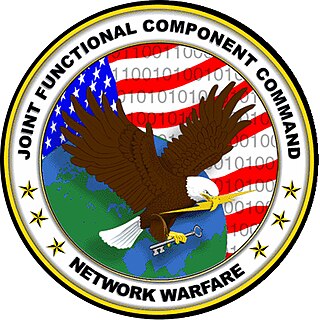
The Joint Functional Component Command – Network Warfare (JFCC-NW) at Fort Meade, Maryland was a subordinate component command of United States Strategic Command (USSTRATCOM) active from 2005 to 2010. It was responsible for coordinating offensive computer network operations for the United States Department of Defense (DoD). JFCC-NW was created in 2005. It was merged into United States Cyber Command in October 2010.
A unified combatant command, also referred to as a combatant command (CCMD), is a joint military command of the United States Department of Defense that is composed of units from two or more service branches of the United States Armed Forces, and conducts broad and continuing missions. There are currently 11 unified combatant commands, and each is established as the highest echelon of military commands, in order to provide effective command and control of all U.S. military forces, regardless of branch of service, during peace or during war time. Unified combatant commands are organized either on a geographical basis or on a functional basis, e.g., special operations, force projection, transport, and cybersecurity. Currently, seven combatant commands are designated as geographical, and four are designated as functional. Unified combatant commands are "joint" commands and have specific badges denoting their affiliation.
The structure of the United States Navy consists of four main bodies: the Office of the Secretary of the Navy, the Office of the Chief of Naval Operations, the operating forces, and the Shore Establishment.
The Naval Security Group (NAVSECGRU) was an organization within the United States Navy, tasked with intelligence gathering and denial of intelligence to adversaries. A large part of this is signals intelligence gathering, cryptology and information assurance. The NAVSECGRU organization was active from March 1935 to September 2005.
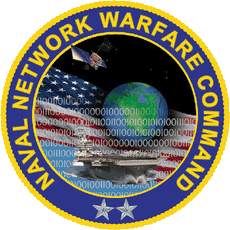
Naval Network Warfare Command (NAVNETWARCOM) is the United States Navy's information operations, intelligence, networks, and space unit. Naval Network Warfare Command's mission is to execute, under Commander TENTH Fleet Operational Control, tactical-level command and control of Navy Networks and to leverage Joint Space Capabilities for Navy and Joint Operations.
A cyber force is a military branch of a nation's armed forces that conducts military operations in cyberspace and cyberwarfare. The world's first independent cyber force was the People's Liberation Army Strategic Support Force, which was established in 2015 and also serves as China's space force. As of 2022, the world's only independent cyber forces are the PLA Strategic Support Force, the German Cyber and Information Domain Service, Norwegian Cyber Defence Force, and the Singapore Digital and Intelligence Service.
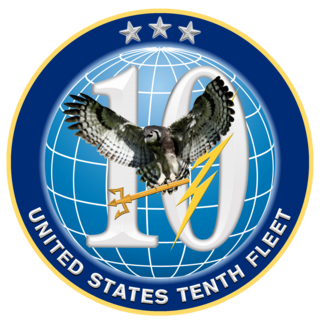
The U.S. Tenth Fleet is a functional formation and a numbered fleet in the United States Navy. It was first created as an anti-submarine warfare coordinating organization during the Battle of the Atlantic in the Second World War. It was reactivated as a force provider for Fleet Cyber Command on 29 January 2010. U.S. Tenth Fleet serves as the numbered fleet for U.S. Fleet Cyber Command and exercises operational control of assigned naval forces to coordinate with other naval, coalition and Joint Task Forces to execute the full spectrum of cyber, electronic warfare, information operations, and signal intelligence capabilities and missions across the cyber, electromagnetic, and space domains.
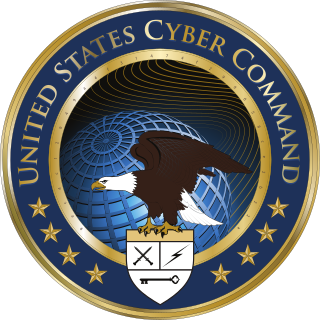
United States Cyber Command (USCYBERCOM) is one of the eleven unified combatant commands of the United States Department of Defense (DoD). It unifies the direction of cyberspace operations, strengthens DoD cyberspace capabilities, and integrates and bolsters DoD's cyber expertise.
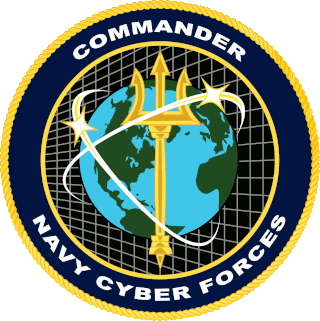
The Navy Cyber Forces (CYBERFOR) was the type command for the U.S. Navy's global cyber workforce. The headquarters was located at 115 Lake View Parkway in Suffolk, Virginia. CYBERFOR provided forces and equipment in cryptology/signals intelligence, cyber, electronic warfare, information operations, intelligence, networks, and space. Navy Cyber Forces was an operational component of the U.S. Navy Information Dominance Corps. CYBERFOR has been absorbed into the Naval Information Forces command.

The U.S. Marine Corps Forces Cyberspace Command is a functional formation of the United States Marine Corps to protect critical infrastructure from cyberattack. Marine Corps Forces Cyberspace Command is the Marine Corps component to U.S. Cyber Command. It comprises a command element, the Marine Corps Cyber Operations Group, and the Marine Corps Cyber Warfare Group, a total of approximately 800 personnel. MARFORCYBER was established on January 21, 2010 under the command of LtGen George J. Flynn,. As of 7 July 2021, MajGen Ryan P. Heritage is in command.

The U.S. Navy Information Warfare Community (IWC) leads and manages a cadre of officers, enlisted, and civilian professionals who possess extensive skills in information-intensive fields. This corps works in information, intelligence, counterintelligence, human-derived information, networks, space, and oceanographic disciplines to support US Navy, Joint and national war fighting requirements. The IWC is part of a U.S. Navy initiative to merge intelligence with command, control, communications, and computers.

Michael S. Rogers is a retired four-star admiral of the United States Navy. Rogers served as the second commander of the United States Cyber Command (USCYBERCOM) from April 2014 to May 2018 while concurrently serving as the 17th director of the National Security Agency (NSA) and as chief of the Central Security Service (CSS). During his tenure, he helped transform and elevate U.S. Cyber Command into a unified combatant command. Rogers relinquished command to General Paul M. Nakasone on May 4, 2018 and retired from the Navy a few weeks later on June 1, 2018.

Ross Allen Myers is an American naval aviator and a retired vice admiral in the United States Navy, who served as deputy commander of the United States Cyber Command from May 2019 to September 2020. He was nominated in March 2020 to be the commander of the United States Tenth Fleet/U.S. Fleet Cyber Command, replacing retiring Vice Admiral Timothy J. White. As a naval aviator, he has commanded several warships and military units, including fleet replacement squadron, Carrier air wing, and air group.

Navy Space Command is the command that serves as the United States Navy service component of the U.S. Space Command. It is tasked with developing space capability to provide the Navy with global communications, targeting, and reconnaissance using space-based assets.
